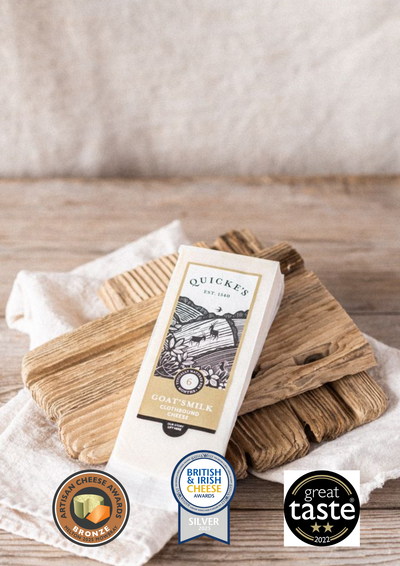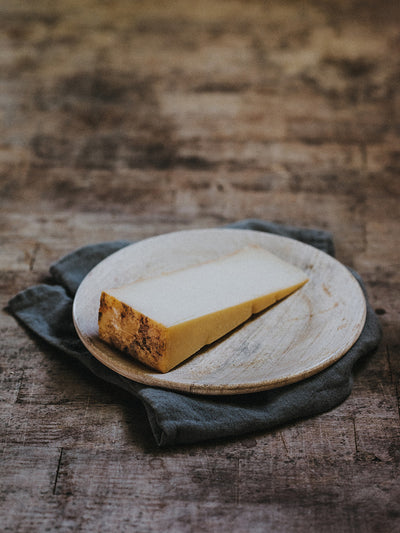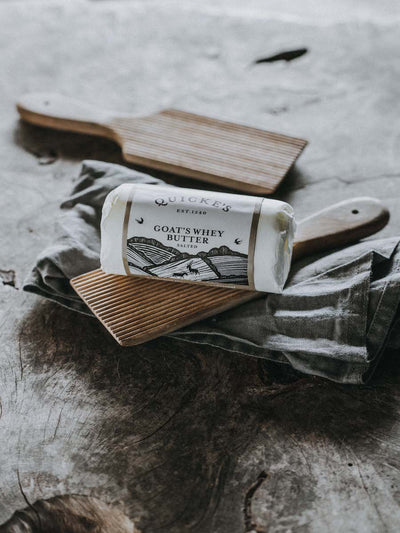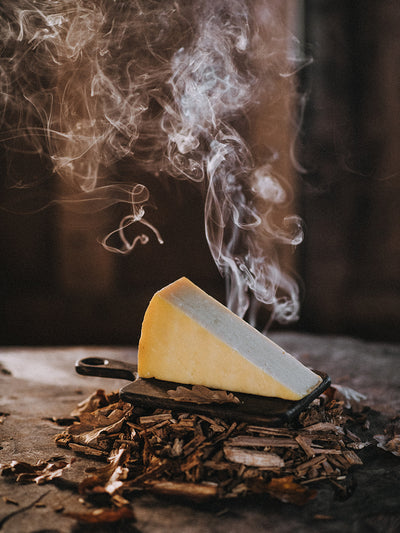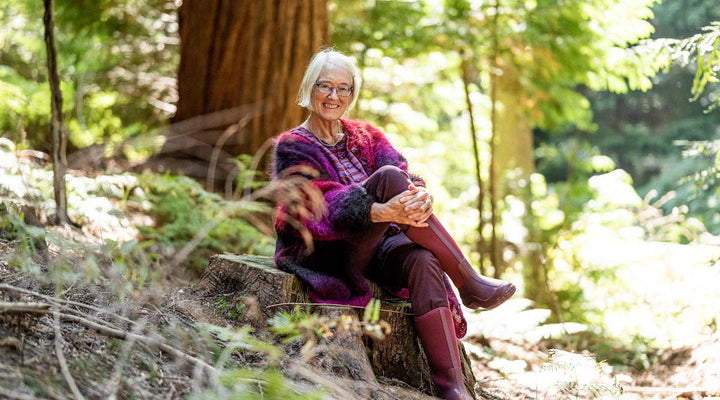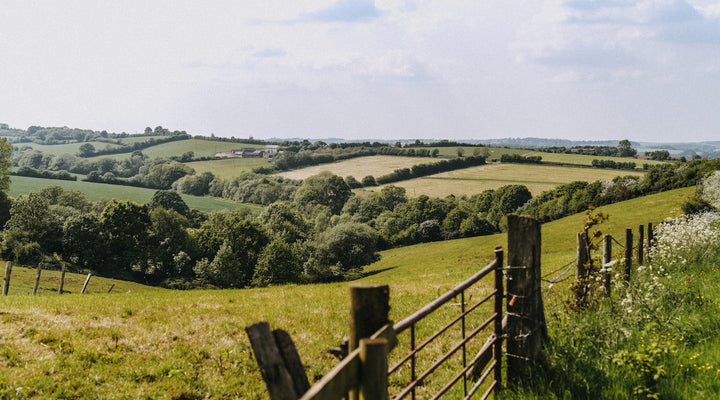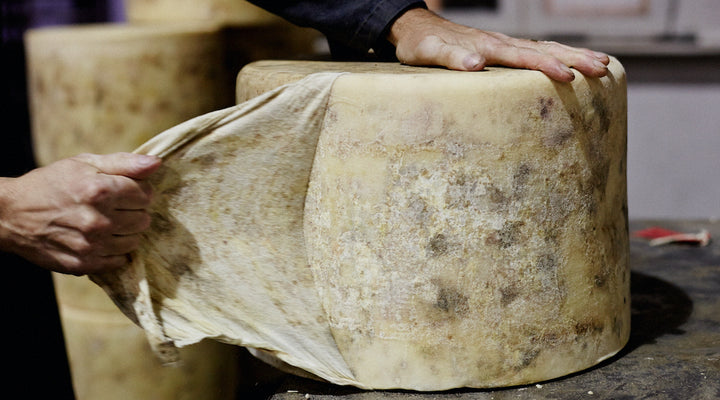Spring is springing. We’ve gone beyond the time when we’ve been saying how alarming it is to see daffodils out so early (and we did). We hit high spring a little early, that magical time of breathtaking beauty, the landscape transforming in the brisk air. Trees go from bare branches to fully clothed in a trice: it feels like if I had sat and watched, I could have seen the leaves unfurl. The leaves unfold like butterfly chrysalis, million upon million of exquisite origami shapes emerging as lovely new leaves. Wild garlic clothes the damp woodlands, star shaped flowers scent the air with fresh garlic: ‘stinking lily’ to the old Devonians, cooking ideas whirling in my mind. The birdsong becomes loud in the ever-earlier dawn, as birds stake out their territory to feed their families. Ravens make their ancient harsh cry if you come within 50 yards of their tree, even though the untidy nests are high in the top branches.
New life emerges on the farm: farming works best when we roll with the rhythm of the seasons. Spring barley and oats jump out of the ground, urgently making use of the strengthening sun and warmth. By harvest, they will only be two or weeks later that the autumn sown crops, sown five months earlier. They will yield less, and don’t need so much nursing through the winter, when everything from mildew to deer have a go at the young leaves. They also give the opportunity for an overwinter fallow, good for wildlife, or a winter crop of kale, which kept some heifers fed over winter. We are sowing a trial pea/ barley mix to make into a high protein silage to replace bought in rape meal, that is a by-product of vegetable oil production. It will be great to feed our animals from the farm, and in so doing put some goodness back into the land from the pea roots, plus returning the goodness of the land to the land in their manure.
We have calves everywhere: it’s lovely to seem them skittering along eagerly chasing the person with the milk. We let the calves graze as soon as they are suckling from an artificial teat. They are as excited as small children in a playground. We now have a childcare nursery on the farm, and the little children love to see the calves, seeing creatures at the same phase of life as them.
When calving is over, we’ll see how calving went this year: our cows had a more sedentary indoor winter. How will that affect things? Cows indoors overwinter is better for the soil (we didn’t like to see the soil erosion), our team (trudging through the mud) and our neighbours (worry about animals on muddy fields). The animals themselves seemed to thrive wintering out in the fresh air: they used to grow woolly coats and had lots of exercise, keeping them fit for calving. As with so many things in farming, we are grappling with complex processes where there is often no straightforward answer.
In our planning for the year ahead, we will try standing hay to feed outwintered animals. This is where we let the grass grow tall from late summer, and graze it a paddock at a time in the winter, knowing animals will trample some. That will protect the soil a little from the animals’ feet. It’ll become soil itself as it rots, better for the following crop, holding more rain, as well as sequestering more carbon.
Meanwhile, this spring, cows are enjoying the grass, settling down to munch the new leaves. I love the sound of a herd of cows grazing all together: it’s the sound of many grass leaves tearing and the gorgeous aroma of grass. March is the balance point where we watch to see if grass growth picks up in time to feed all the hungry mouths. If the weather is warm grass grows more than the cows can eat. If it’s cold, grass growth slows, and we must feed some hay or silage to avoid eating too far into the leafy growth, as that slows grass growth further, and the grass is so young it goes through the cows too quickly, making them all the hungrier, and their milk fat drops, making the cheese hard and less luscious. The balance tips quickly, and takes several weeks on the farm to recover from a misjudgement.
In the cheese dairy, the cheesemaker reads the milk, where all those accumulated decisions land. How hard is the curd? How much moisture is it holding? It’s the cheesemaker’s judgement on the day, how fine to cut, when to take the whey off, whether to dry stir the curd, by feel and sight and how fast the acidity develops. Tomorrow, after the day’s make, we might see if fat and protein is out of line, or whether we need to change the scald or manage the starter differently. It’s only three months later we first grade the cheese, and then a year old when we see now it matures. None of that makes the difference on the day of make. The cheesemaker’s skill and commitment to reveal the loveliest cheese hidden in the vat of milk, is so important. It’s like Michelangelo finding David in the block of marble, only for every vat of every day.
I love this time of year when the wild food becomes more plentiful. Nettle soup is my favourite. I pick the tips of nettles, (with gloves!) before they get to stalky, some wild garlic leaves, and a few watercress leaves from the stream for flavouring. I love the gentle shellfish note of nettles, which I might bring out from a salmon stock I’ve got left over from a poached salmon with lots of vegetables that flavoured the stock. I boil some potatoes to thicken the soup. When they are tender, I throw in the washed leaves, boil for a few minutes till soft. Add cream, salt and pepper to taste and whizz up with a stick blender. Serve with our Buttery Cheddar grated on top to give a delicate and gentle country feast with Sourdough bread and Lady Prue Butter (mixed goats and cow’s milk butter).
Mary Quicke

